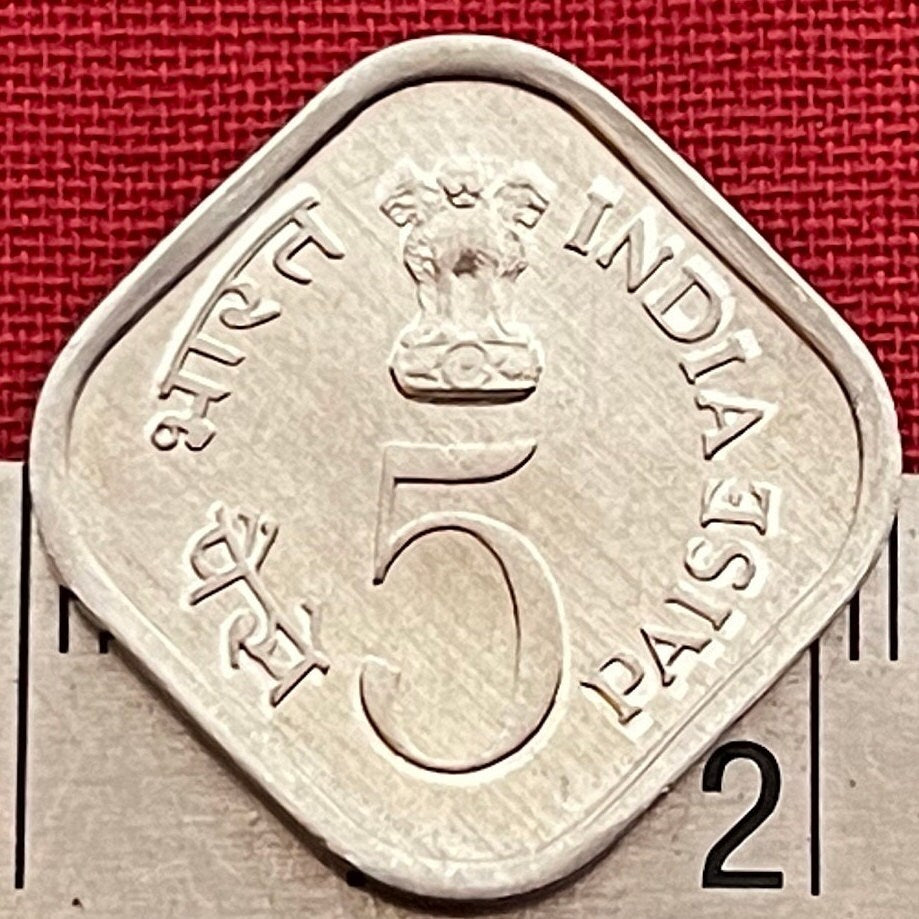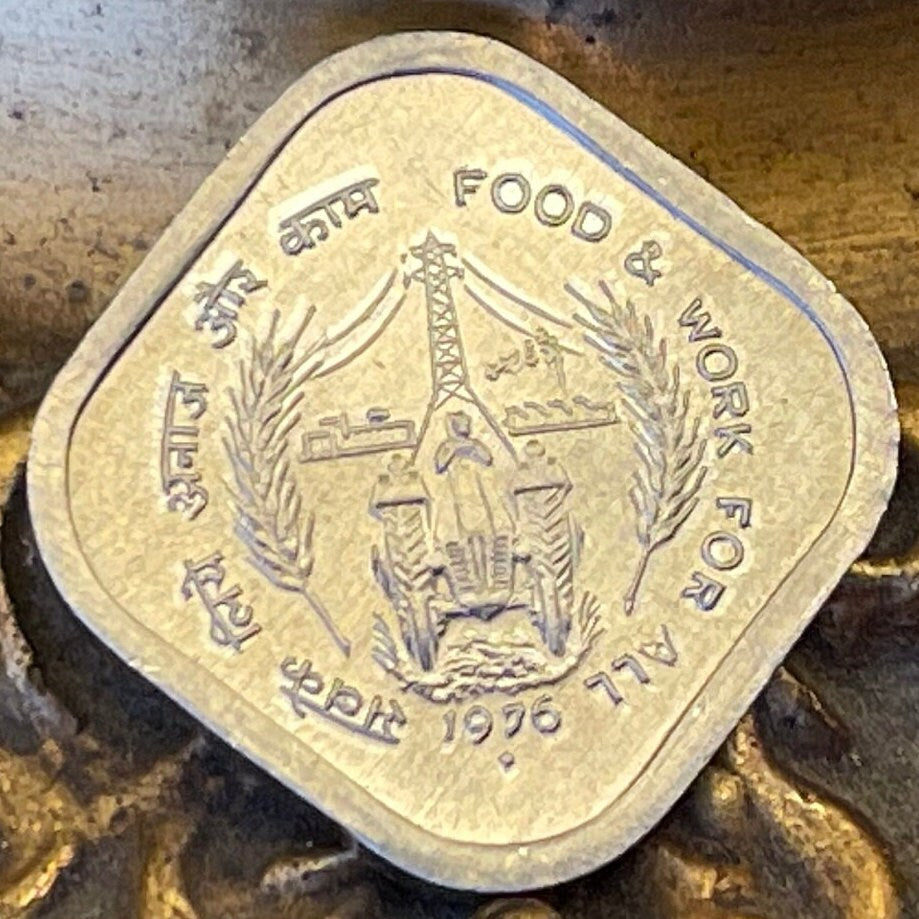elemintalshop
Tractor Farmer at Electric Pole & Ashoka Lion Capitol 5 Paise India Authentic Coin Money for Jewelry (Food Work) (1976) (Square Coin)
Tractor Farmer at Electric Pole & Ashoka Lion Capitol 5 Paise India Authentic Coin Money for Jewelry (Food Work) (1976) (Square Coin)
Couldn't load pickup availability
Tractor Farmer at Electric Pole & Ashoka Lion Capitol 5 Paise India Authentic Coin Money for Jewelry and Craft Making (Food & Work) (FAO) (1976) (Square Coin)
Commemorative issue: F.A.O. - Food & Work for all
Reverse: Figure on tractor, utility pole and buildings in background
Lettering: सब के लिए अनाज और काम
FOOD & WORK FOR ALL
1976
Obverse: Asoka lion pedestal, denomination below
Lettering: भारत INDIA
पैसे 5 PAISE
Features
Issuer India
Period Republic (1950-date)
Type Circulating commemorative coin
Year 1976
Value 5 Paise (0.05 INR)
Currency Rupee (decimalized, 1957-date)
Composition Aluminium
Weight 1.5 g
Diameter 22.32 mm
Thickness 2.17 mm
Shape Square
Orientation Medal alignment ↑↑
Demonetized Yes
Number N# 1745
References KM# 19
Wikipedia:
Tractors in India is a major industry and significant contributor to its agriculture output gains.
In 1947, as India gained independence from the British Empire, the level of agriculture mechanisation was low. The socialist oriented five-year plans of the 1950s and 1960s aggressively promoted rural mechanisation via joint ventures and tie-ups between local industrialists and international tractor manufacturers. Despite these efforts, the first three decades after independence local production of 4-wheel tractors grew slowly. By the late 1980s tractor production was nearly 140,000 units per year, and a prevalence rate of less than 2 per 1,000 farmers.
After economic reforms of 1991, the pace of change increased and by late 1990s with production approached 270,000 per year. In early 2000s, India overtook the United States as the world's largest producer of four-wheel tractors. FAO estimated, in 1999, that of total agricultural area in India, less than 50% is under mechanised land preparation, indicating large opportunities still exist for agricultural mechanisation.
In 2013, India produced 619,000 tractors accounting for 29% of world's output, as the world's largest producer and market for tractors. India currently has 16 domestic and 4 multinational corporations manufacturing tractors.
The year 2020-21 has been an astonishing year for the tractor industry as the overall tractor sales went up from 7,85,059 to 9,88,043 this year including an incline in domestic sales by 26.9% and in exports by 16.4% when compared with the year 2019-20. This incredible growth resulted in total domestic sales of 8,99,480 and export of 88,563 tractors as well as it also brought an overall increment of 25.9% during 2020-21 when contrasted with 2019-20.
*********
Wikipedia:
The Lion Capital of Ashoka is a sculpture of four Asiatic lions standing back to back, on an elaborate base that includes other animals. A graphic representation of it was adopted as the official Emblem of India in 1950. It was originally placed on the top of the Ashoka pillar at the important Buddhist site of Sarnath by the Emperor Ashoka, in about 250 BCE during his rule over the Maurya Empire. The pillar, sometimes called the Aśoka Column, is still in its original location, but the Lion Capital is now in the Sarnath Museum, in the state of Uttar Pradesh, India. Standing 2.15 metres (7 feet) high including the base, it is more elaborate than the other very similar surviving capitals of the pillars of Ashoka bearing the Edicts of Ashoka that were placed throughout India several of which feature single animals at the top; one other damaged group of four lions survives, at Sanchi.
The capital is carved out of a single block of polished sandstone, and was always a separate piece from the column itself. It features four Asiatic Lions standing back to back. They are mounted on an abacus with a frieze carrying sculptures in high relief of an elephant, a galloping horse, a bull, and a lion, separated by intervening spoked chariot-wheels. The whole sits upon a bell-shaped lotus. The capital was originally crowned by a 'Wheel of Dharma' (Dharmachakra popularly known in India as the "Ashoka Chakra"), with 32 spokes, of which a few fragments were found on the site. A 13th-century replica of the Sarnath pillar and capital in Wat Umong near Chiang Mai, Thailand built by King Mangrai, preserves its crowning Ashoka Chakra or Dharmachakra. The wheel on the capital, below the lions, is the model for the one in the flag of India.jai hind
Share



















